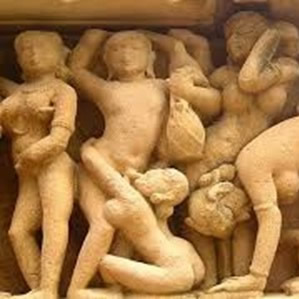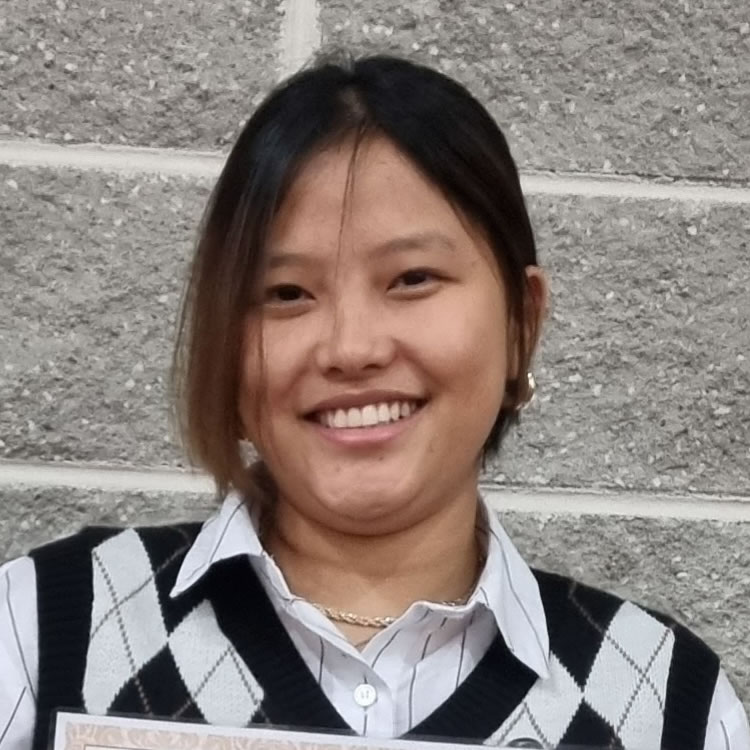Erotic is power - barsha R.


Description:
For my artifact, I have used a sculpture which is on display at The Jagannath temple of Kathmandu Durbar Square. This temple is dedicated to Lord Vishnu. In the artefact we can see six different characters indulging in different forms of intercourse.
Significance:
I chose this artifact because this sculpture beautifully expresses sexuality and embraces eroticism. In my Hindu Nepalese community, we do not talk about having sex, let alone enjoying sex. Sex or intercourse is considered an embarrassing topic and is only discussed after marriage, as a means to bear children, not a means to pleasure, expression or joy (Lorde 1984). Moreover, we only discuss heteronormative and able-bodied sex. However, in a country where discussing sex is a mortifying experience, sculptures like these have been displayed publicly in some of the oldest temples, heritage sites and historical monuments for hundreds of years. Moreover, this artifact is only one example, because in other sculptures we can witness genitals, LGBT references, masturbation, oral sex, assisted sex and more. So, this makes me wonder what happened in the past 100-200 years, that we stopped talking about sex, genitals, sexuality and pleasure? And since we do not talk about the basics of sex, there is rarely any discussions about gender, expression, power, inclusion and autonomy. Such refusal of sexual consciousness might have occurred because our cultural discourse on sex has been highly influenced by the European-American interpretation of sexuality as a risk, danger and sin (Gianotten, Alley and Diamond 2021). This supposition has prevented myself and my people from maintaining a meaningful and safe sexual life. Therefore, I chose this artifact because it serves as a reminder of how openly sexuality was discussed, expressed and promoted in my culture.
Positionality:
I am interested in disability and sexuality to understand society’s obsession with ‘normality’ and how it fosters stigmatization and marginalization. When I was younger, disability only meant physical and/or behavioral differences in people and sex only meant genitals or intercourse (Shuttleworth 2007). However, growing up I started noticing how disability and sexuality are more than just physical attributes, rather they are social constructs that discriminate and segregates people who do not align with the society’s expectation of normality. Moreover, I am interested in this topic because I want to reflect on my own privileges, experiences and analyse how it affects my practice as a future social worker. As a young able-bodied cisgendered straight woman, I never felt the need to discuss these topics or reflect on the biases that I have already internalized. For example, I viewed disability as a catastrophic life event. Furthermore, these topics were often neglected and rarely discussed at my home or school. However, as an aspiring social worker, it is very important that I acknowledge these structural inequalities to ensure effective practice which promotes inclusion, equality, social justice and human rights (Shuttleworth 2007). Besides my profession, I also want to challenge my own covert biases, stereotypes and microaggressions. Furthermore, I acknowledge that disability and sexuality are not a matter of individual concern, rather a public affair. Additionally, I also want to learn how the intersectionality of disability and sexuality impacts a person’s life, decision and autonomy.
Impact:
This subject has impacted me by challenging my preconceived idea of disability and sexuality and educating me about the intersection between these two topics. For long I have considered disability as a personal tragedy and have expressed compassion and sympathy towards people with disability. Similarly, sex only meant vaginal penetrative intercourse, porn or genitals. Moreover, I never perceived people with disability as sexually active and never acknowledged the oppression that occurs when disability and sexuality intersect. Instead, I considered them helpless victims who need protection from sexual violence and exploitation (O’Shea et al. 2020). However, I have now realized how problematic this attitude is. Since I started studying this subject, I understand how sexuality is a primary aspect of human relation, identity and wellbeing. Similarly, I now understand how people with disability are not restricted by their bodily impairment, rather societal barrier and expectation. Moreover, I realized that my concept of sexuality was based on sexual ableism; qualifications to be sexual based on one’s ‘ability, intellect, morality, physicality, appearance, age, race, social acceptability and gender conformity’ (O’Shea et al. 2020, p.59). Furthermore, we often deny large part of the sexual experience by refusing to be conscious of our sexual feelings and desires (Lorde 1984). However, studying this subject has empowered me to explore my sexuality, view eroticism as source of power, understand how my genitals work and look beyond the heteronormative sex, establishing intimacy and sensation.
Wish List:
I hope my artifact inspires viewers to explore and consider the erotic as a source of power. We often associate sexuality with pornography and absurdity (Lorde 1984). We often neglect it, look away and call it something else. Instead, I want people to embrace eroticism as it unleashes open and fearless capacity of joy and pleasure. Similarly, I want people to openly discuss sex, understand the anatomy of their genitals and feel confident about their body. As mentioned earlier, our cultural discourse of sex has been dominated by the European-American concept of sex as sin. Many of these curricula created by ideological conservatives put a strong emphasis on values and attitude, with lesser emphasis on knowledge, and almost complete lack of attention to behavioral expressions other than abstinence (Lorde 1984). Therefore, I want people, especially from my community, to reflect on what form of sex education they have received, from whom/where and how it has shaped their experience of sex and sexuality. My people have avoided discussing about sexuality, pleasure, identity and desire for a long time. Thus, by referring to this artefact and other relevant ancient scriptures, I want people to embrace sex positive attitude. Moreover, I want the viewers to look beyond my artefact, explore and research for further information and education. It is because sexuality is not just intercourse rather it is sensation, intimacy, sexual identity, sexualization and sexual health and reproduction, which my artefact does not portray effectively (Turner 2020).
Comments are closed.



One Comment
Barsha, your analysis and critical thought processes were fascinating to read. Thank you for sharing some insight into how sex and sexuality is viewed in your culture. It is important to highlight different worldviews when it comes to sex and pleasure, particularly as my only exposure has been through a Western perspective. What I can see they both have in common in the theme of shame. Whether or not sex is considered a sin, it is still highly stigmatised and not openly discussed within all circles of society. This is even more apparent when we have examined the discourse around sex and disability in this unit. I was wondering if the male cohort in Nepal also find discussing sex so shameful and stigmatising, or is this something that more predominantly affects women in your culture?
Your point around a lack to discussion concerning sex due to a fear of risk made me think about how the opposite is actually true and that certain groups silencing this topic prevents sex positivity, personal agency and wellbeing (Giertsen, Lavie-Ajayi & McKay, 2021). If we don’t talk about sex, or have conversations where we can name our genitalia, or talk candidly about consent, then it perpetuates the very narrow lens of who is allowed to discuss sex and sexuality and who is left out. Socially critiquing what we are exposed to can help to recognise where power imbalances exist and will ultimately help us in our future social work roles.
Your views beneath this artefact show that you have been open and interested in critically examining your own beliefs and where they have come from, but also looking beyond them to learn from other viewpoints you may not have encountered before. I think it is really special that we have been on this learning journey together and have all embraced opening our minds and challenging our own thinking. Good luck in your future role!